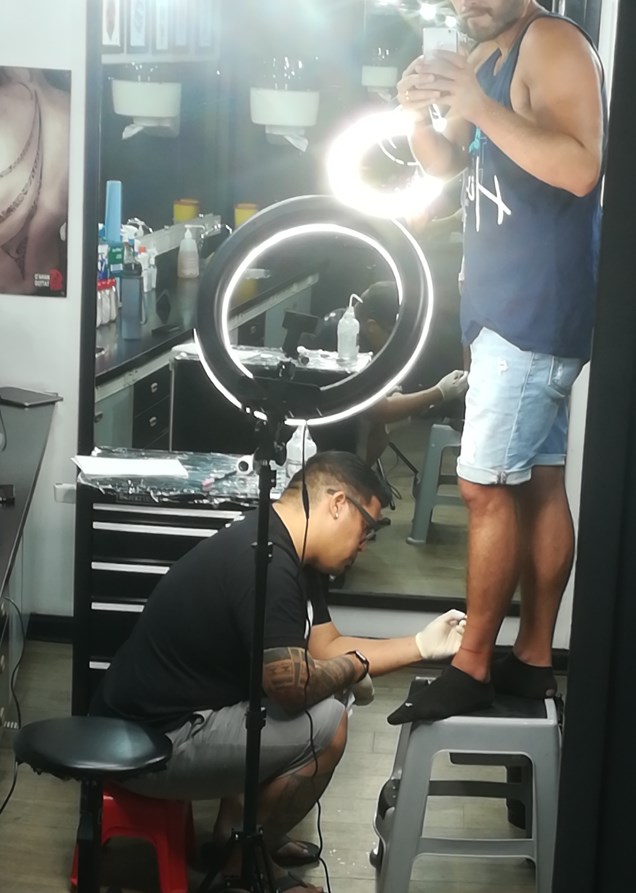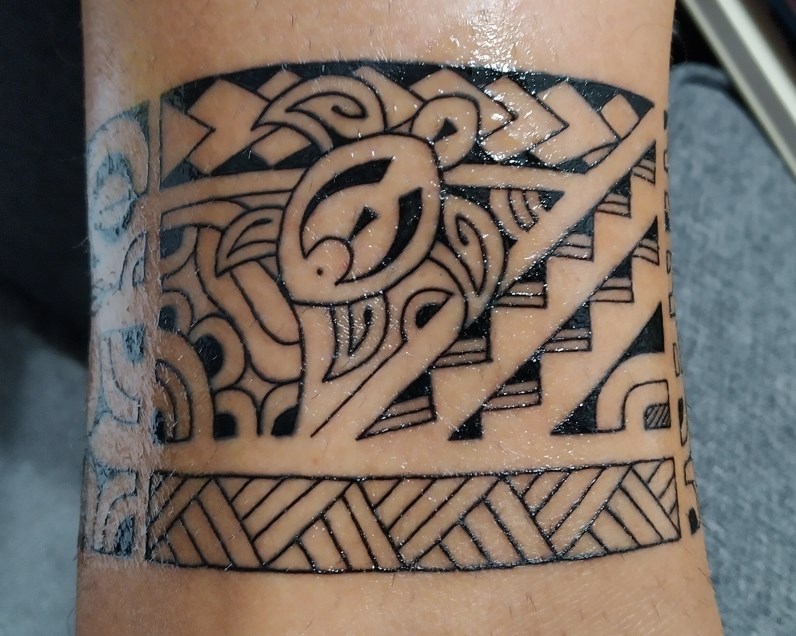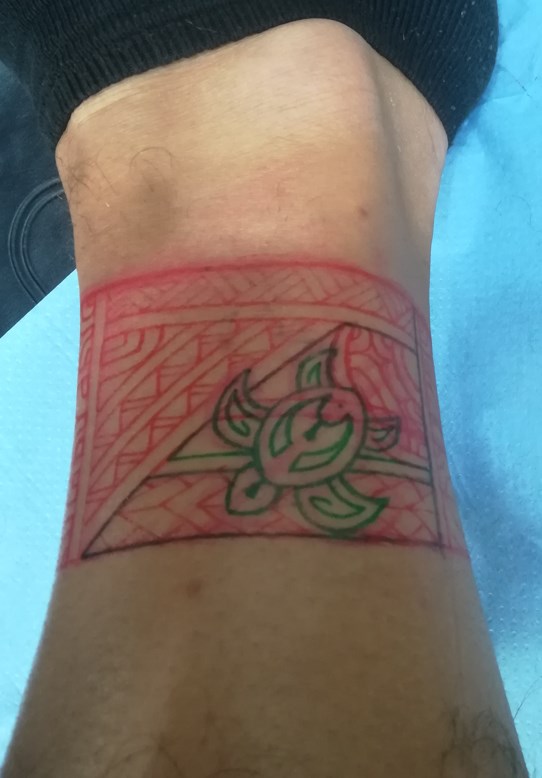THE HAIRY GIRAFFE… IN FRENCH POLYNESIA
If, like François (and many tourists), you want to bring back a tattoo as a souvenir of your trip to French Polynesia, here are nine things to know.
 We are François and Benjamin, Canadian and French giraffe hairstylists and travel enthusiasts. On this blog, discover our travels, tips, moods, and everything you need to become a giraffe hairstylist and embark on travelling the world. An honest blog with photos guaranteed 100% unfiltered and untouched. |
1. The origin of the word tattoo comes from the Polynesian word “tatau,” which means “to mark” or “to strike.” The tradition dates back over 1000 years before Christ and was used to mark important stages in life for both men and women. Long banned during the time of the missionaries, tattoos are now omnipresent in Polynesian culture and are proudly worn by the majority of the population.
2. A Polynesian tattoo consists of representations of plants, animals, and humans. The arrangement of the patterns represents the identity, values, and beliefs of the person wearing the tattoo. If you decide to get a tattoo in Polynesia and choose to give your tattoo artist complete freedom (as was my case), expect them to have a discussion with you before the session to get to know you better and be able to suggest a tattoo that reflects your personality.


3. A Polynesian tattoo is always personalized. Hence, many tattoo artists will refuse to replicate an existing tattoo. In this case, it’s better to give them creative freedom. They are true artists, and you’ll be certain to wear something unique.
4. Some artists from the Marquesas and Tahiti continue the tradition using ancestral techniques. In this case, there’s no drawing with an ink pen, but rather a small hammer and needles being tapped against your skin. It’s said to be painful and notably more time-consuming than using a pen.

5. Polynesian tattoo artists don’t use stencils. They freehand draw with a pen directly onto the skin, get your approval, and then begin tattooing. While this method might be surprising at first, you’ll quickly realize that the result is 100 times more beautiful.
6. Tattoo studios are plentiful across the different islands, especially abundant on Tahiti. Prices vary depending on the artist and the tattoo’s size. However, don’t wait to book, especially if you plan on getting a larger tattoo. Time slots fill up quickly, especially during the high season (due to tourists).
7. A recent tattoo and swimming aren’t compatible if you don’t want parts of the design to fade away or risk a skin infection. So, getting a tattoo upon arrival might not be a good idea if you plan to spend most of your stay at the beach.
8. Remember to follow the tattoo artist’s advice and moisturize your skin well during the return flight. Perhaps setting an alarm on your phone could help not to miss a treatment? The long journey and jet lag are sufficient to disrupt your care routine.
9. To promote the healing of your tattoo, tamanu oil, a local fruit with healing and analgesic properties, is an excellent solution. Opt for the ointment version as it’s easier to apply than the oil. You can find it in pharmacies, markets, and supermarkets.
Check out all our other articles on French Polynesia (detailed itineraries, travel reflections…):




